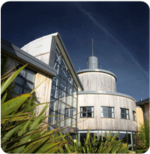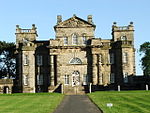Bedlington is a town and former civil parish in Northumberland, England, with a population of 18,470 measured at the 2011 Census.Bedlington is an ancient market town, with a rich history of industry and innovative residents. Located roughly 10 miles northeast of Newcastle and Newcastle Airport, Bedlington is roughly 10 minutes from the A1 road, in southeast Northumberland. Other nearby places include Morpeth to the northwest, Ashington to the northeast, Blyth to the east and Cramlington to the south. In 1961 the parish had a population of 29,403.The town has evidence of habitation from the Bronze Age, with a burial site being located just behind what is now the main Front Street. A cluster of Bronze Age cist burials were discovered during excavation of the site in the 1930s. St Cuthbert's Church is the longest standing building in the town, with parts of this dating back to the 11th century and recently celebrated being 1000 years old. The church is in the heart of the original sandstone conservation town centre. Most of the medieval town has disappeared with many of the historic buildings and factories being demolished over the years, but there are still nods to medieval street layouts. The main Front Street is currently made up of Georgian and Victorian buildings.
Today Bedlington is probably best known for being the home of the Bedlington Terrier, a dog that has taken the name across the planet, not for the first time. At key points in history, before and during the Industrial Revolution, goods made in Bedlington made it to all corners of the globe through the distribution of nails and trains that were made in Bedlington from some 250 years ago. With large industry first being attracted to Bedlington over 250 years ago, in the form of its world-renowned iron works, mining became an intrinsic part of Bedlington from 1838. The coal industry remained at the heart of the town until the closure of the mines in the 1980s. Today Bedlington's Front Street is host to a number of well-established eating and drinking venues, and there is an emergence of new establishments and retailers entering the town.
The parish of Bedlington constituted the historic exclave of County Durham called Bedlingtonshire. It is famous for giving its name to a breed of dog; the Bedlington Terrier.









